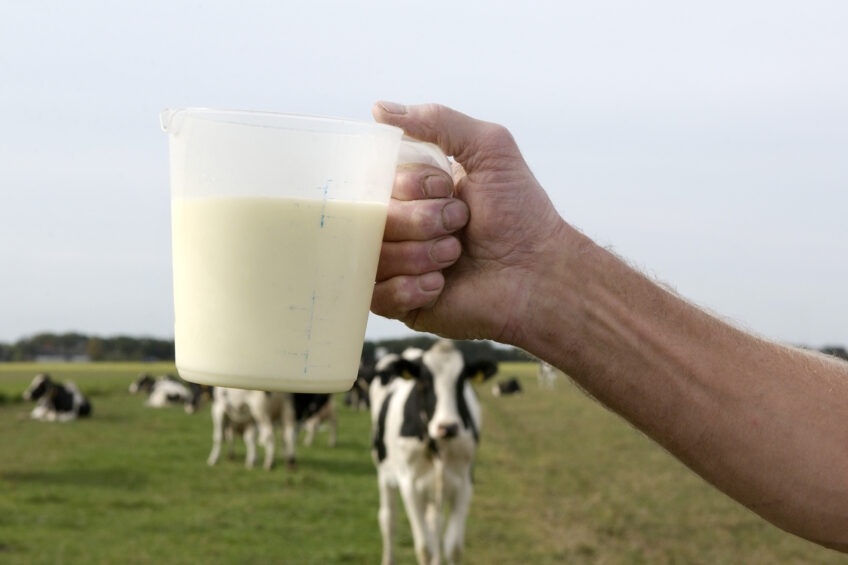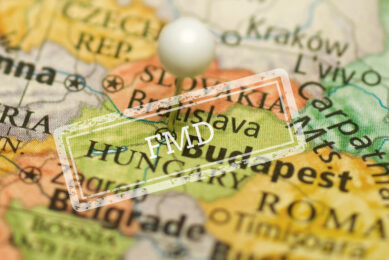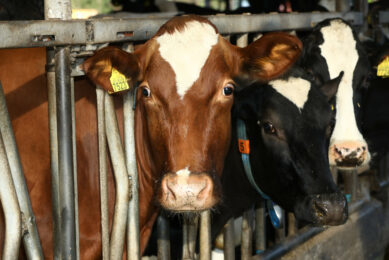Milk quota end, new limiting factors arise

The recent abolition of the European milk quota system paves the way to increase production and to increase the number of cows. But growth also has its limits and farmers need to call upon their management skills even more.
Before and after the important turning point on April 1st, many people shared their opinion about whether ending the milk quota system, which was introduced in 1984, was a good or bad thing for the dairy sector. Commenting on the end of the quota regime, EU Commissioner for Agriculture and Rural Development Phil Hogan stated: “The end of the milk quota regime is both a challenge and an opportunity for the Union. It is a challenge because an entire generation of dairy farmers will have to live under completely new circumstances. And it is an opportunity in terms of growth and jobs.” But it seems that the real effects for farmers are still not fully clear in all countries.
Increase in demand for dairy
The increased global demand for dairy products has overruled the current quota system. The increased demand is attributed to the growth of the human population, urbanisation and increased incomes (leading to more demand for fresh dairy and meat). However, Higher consumption of dairy products in certain countries will not necessarily mean that these countries will be importing more: India, for example, is expected to remain self-sufficient (and even become a marginal net exporter). Nevertheless, the European Dairy Association (EDA) stresses the profoundly favourable prospects for EU dairy on the medium and long term demand and stated that ‘milk is the white gold of the next ten years’. It is expected that dairy markets will be mainly driven by Asia and Africa. Obviously, it is clear that the milk quota system, which was introduced on 2 April 1984 under the Dairy Produce Quota Regulations, made sense in a time when EU production far outstripped demand. But already 10 years ago, abolition of this system was announced, because demand was growing in the emerging markets. In addition, successive reforms of the EU’s Common Agriculture Policy have increased the market-orientation of the sector and provided a range of other, more targeted instruments.
Efforts in milk production capacity increase
Now that April 1st has passed, it is projected that milk production will concentrate further in North-West Europe. According to the medium term outlook report from the EC, significant improvements are expected in milk yields, especially in the EU-N13 (the 13 member states that joined the EU after 1995), where yields are currently still relatively low. “Further genetic improvements are expected in the EU-15, but the main driver for higher yields in these countries will be the increasing number of milking robots. By the end of the outlook period, milk yields could reach 5,700 kg/cow in the EU-N13 and 8000 kg/cow in the EU-15,” the EC states. According to Rabobank, the farmers in these regions will start using their extra capacity, which was built up over the last decades. When the milk quota end was announced in 2006, the EU milk production started to increased volumes, leading to an increase of 12 million tonnes. Figure 1 shows the increase in EU-28 milk production between 2003 and 2013. A large share of the extra capacity at dairy farms and processors is thus already been in use. Nevertheless, milk processors are still willing to increase capacity even further, as milk output is projected to grow even more in the coming years. Depending on the real figures for production volumes in the near future milk processors have taken steps to invest in extra capacity. According to Rabobank, most of this investment has taken place in Northern and Western Europe, in existing intensive dairy production regions. Friesland Campina in the Netherlands for example has invested around €2.5 billion to increase capacity with 15%. Private or publically owed dairies, however, could have chosen not to invest, instead only contracting to buy the milk that they needed for their market, Rabobank concludes.
The new limiting factors for milk production
For now, the major limiting factors (the quota), and its accompanying superlevies, is passé, which will wipe away the costly superlevies as well. The German Farmers Association (DBV) therefore applauds the ending of the milk quota system. “The quota system has led to an addition cost of €15 billion for superlevies, purchase of extra quota and lease rates.” But having no milk quota system and an accompanying fining system does not necessarily mean that farmers can increase the number of animals just like that. For example in the Netherlands, growth is only possible if the environment is not compromised, and manure production is one of the key criteria to measure this. In other words, production can only grow until the next limiting factor is reached, according to a report from Rabobank. In some member states, the limiting factor will be lack of available land; in others, lack of capital. Elsewhere, environmental restrictions or competition for resources from alternative enterprises will provide the next barrier to increasing production. Farms in Eastern Europe have potential to increase capacity, but investments are needed in processing capacity, logistics and the skill base to enable to deliver according to the highest quality standards.
Pressure on milk prices
But with the major limiting factor now gone, other ‘problems’ may arise. The potential milk volume increase will have an effect on the market situation, a scenario feared by many, but it is difficult to predict what will really happen in the coming years. Price fluctuations and unknown factors have always been part of the dairy business. The Russian ban from last year for example, disrupted dairy prices to a great extent. Nevertheless, UK farmers fear that milk prices will drop considerably. The National Farmers Union (NFU) therefore pleads that all European countries will prevent over supply together. Chairman of the section dairy Rob Harrison said: “The milk prices do not show signs of recovery at the moment. This is why a further drop can be expected now that the quota has ended. It is therefore key that all member states carefully plan the expansion in their country, based on the possible market possibilities.”

As changes require flexibility, EU countries need to provide a mechanism to deal with the milk price fluctuations and more pressure will be placed on having a competitive cost price. This can be done via upscaling and product optimisation. But for some countries, the latter is a difficult one and we have seen a decline in the number of cows in the EU. Furthermore, in many countries, such as the Netherlands, production has already been fully optimised. For example: one third of the Dutch dairy farmers already has a cost price that is competitive with other countries. This group also see upscaling not as a ‘must’.
According to Rabobank, this leading group of farmers should be followed by the rest of the dairy sector. Only then a good competitive status for a country on the world dairy market can be gained and kept. Also dairy farmer suppliers need to see the necessity of helping farmers through the transition period. According to Lely, producer of milking robots among others, entrepreneurship is getting more key for dairy farmers. “To be successful on the long term it is important to have insights in the cost price. React to milk price fluctuations can be done better when you know what an extra litre of milk costs,” according to the company. They also address that a multiannual plan is key to be able to make the right decisions on the short term. “The base of the company should also be in place. In other words, a low cost price per kilogramme milk, high feed efficiency and low labour costs,” according to Lely. Eddie Downey, president of the Irish Farmers Association (IFA) said: “The enthusiasm about the post quota era must be matched with good business planning and efficiency at farm level, with all players, including banks, advisory services and processors, doing everything possible to support farmers.” More milk has to be produced with less cows. This is one of the major new limiting factors that face European dairy producers. It is up to entrepreneurship of the farmers how to deal with these.
Join 13,000+ subscribers
Subscribe to our newsletter to stay updated about all the need-to-know content in the dairy sector, two times a week.










